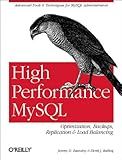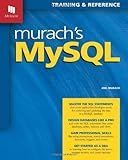Best Database Software Tools to Buy in December 2025

High Performance MySQL
- AFFORDABLE PRICES ON QUALITY BOOKS FOR BUDGET-CONSCIOUS READERS.
- SUSTAINABLY SOURCED: REDUCE WASTE BY BUYING GENTLY USED TITLES.
- RELIABLE CONDITION GUARANTEES GREAT READING EXPERIENCES EVERY TIME.



Head First PHP & MySQL: A Brain-Friendly Guide



Murach's MySQL
- MASTER ESSENTIAL SQL STATEMENTS EFFORTLESSLY WITH PRACTICAL EXAMPLES.
- BUILD AND MANAGE MYSQL DATABASES WITH CLEAR, STEP-BY-STEP GUIDANCE.
- UNLOCK SQL SKILLS THAT BOOST CAREER OPPORTUNITIES AND JOB PERFORMANCE.



Linux Server Hacks: 100 Industrial-Strength Tips and Tools
- AFFORDABLE PRICES ON QUALITY PRE-OWNED BOOKS.
- ECO-FRIENDLY CHOICE: REDUCE WASTE BY BUYING USED.
- FAST SHIPPING ENSURES QUICK ACCESS TO YOUR NEXT READ!



Learning PHP, MySQL & JavaScript: With jQuery, CSS & HTML5 (Learning PHP, MYSQL, Javascript, CSS & HTML5)



Build a real Search Engine: Engineering tools: HTML, CSS, JavaScript, PHP, MySQL


Performing transactions in MySQL allows you to execute a group of SQL statements as a single unit. This ensures that the database remains in a consistent state, even if there are failures or errors during the execution of the transaction.
To begin a transaction, you use the START TRANSACTION statement or simply BEGIN. Once a transaction starts, all subsequent SQL statements are treated as part of that transaction until it is either committed or rolled back.
To commit a transaction and make its changes permanent, you use the COMMIT statement. This ensures that all changes made within the transaction are saved to the database.
On the other hand, if you encounter an error or need to undo the changes made within a transaction, you can use the ROLLBACK statement. This reverts the database back to its previous state by discarding any changes made within the transaction.
To set a transaction savepoint, which allows you to set a marker within a transaction and later rollback to that point if necessary, you can use the SAVEPOINT statement along with a savepoint name.
When working with transactions, it is essential to understand isolation levels. MySQL provides different isolation levels like READ UNCOMMITTED, READ COMMITTED, REPEATABLE READ, and SERIALIZABLE. These levels determine how the database handles concurrent requests and the level of data consistency observed within a transaction.
You can choose an appropriate isolation level for your transaction using the SET TRANSACTION statement. This allows you to balance between data integrity and performance based on your application requirements.
It is important to note that not all database operations support transactions. Operations like creating or altering database objects (e.g., tables, views) are not covered by a transaction and are automatically committed upon execution.
Overall, transactions in MySQL play a crucial role in maintaining data consistency and integrity, ensuring that changes to the database are applied reliably and accurately.
What is the purpose of the SELECT statement in MySQL?
The purpose of the SELECT statement in MySQL is to retrieve data from one or more tables in a database. It is used to specify which columns and rows of data should be returned by the query. The SELECT statement can also be used to perform calculations on the data, join multiple tables, and apply filtering criteria to narrow down the results.
How to insert multiple rows in MySQL using a single query?
You can insert multiple rows in MySQL using a single query by using the INSERT statement with multiple value sets.
Here's an example:
INSERT INTO your_table_name (column1, column2, column3) VALUES (value1_1, value1_2, value1_3), (value2_1, value2_2, value2_3), (value3_1, value3_2, value3_3);
Replace your_table_name with the name of your table and column1, column2, column3 with the names of your columns. Also, replace value1_1, value1_2, etc. with the actual values you want to insert.
The number of value sets should match the number of columns you want to insert into. The values within each value set should be separated by commas, and each value set should be enclosed in parentheses and separated by commas.
Make sure that the order of the values in each value set matches the order of the columns in your table.
How to create an index in MySQL?
To create an index in MySQL, you can use the CREATE INDEX statement. Here is the syntax:
CREATE [UNIQUE] INDEX index_name ON table_name (column1, column2, ...);
Here's an explanation of the parts of the syntax:
- UNIQUE (optional): If specified, it creates a unique index, meaning that the indexed values must be unique in the table. If not specified, it creates a non-unique index.
- index_name: Specify a name for the index. It should be unique within the table.
- table_name: The name of the table on which you want to create the index.
- (column1, column2, ...): The columns on which you want to create the index. You can specify one or multiple columns. Separate multiple columns with commas.
Example:
Suppose we have a table named employees with columns id, name, and age, and we want to create an index on the name column. Here's how you can do it:
CREATE INDEX idx_name ON employees (name);
This will create a non-unique index called idx_name on the name column of the employees table.
If you want to create a unique index, you can add the UNIQUE keyword like this:
CREATE UNIQUE INDEX idx_name ON employees (name);
This will create a unique index called idx_name on the name column of the employees table.
How to perform a backup and restore in MySQL?
To perform a backup and restore in MySQL, you can follow these steps:
Backup:
- Open your preferred command-line interface or MySQL client.
- Log in to the MySQL server using the appropriate credentials: mysql -u -p
- Select the database you want to back up: USE ;
- Run the backup command using mysqldump: mysqldump -u -p > backup.sql Replace and with your actual values. You will be prompted to enter your password after running this command.
- The backup file, backup.sql, will be created in the current directory. This file contains the SQL statements required to recreate the database structure and insert all the data.
Restore:
- Make sure you have the backup file (backup.sql) available.
- If the database you want to restore already exists, you may want to drop it first. Be cautious as this will delete the existing data permanently: DROP DATABASE IF EXISTS ;
- Create a new database (if not already created) to restore the backup into: CREATE DATABASE ;
- Switch to the newly created database: USE ;
- Restore the backup using the following command: mysql -u -p < backup.sql Replace , , and backup.sql with the appropriate values. You will be prompted to enter your password after running this command.
- The backup file will be executed, recreating the database structure and inserting all the data into the specified database.
Note: Keep in mind that during the restore process, any existing data in the database may be overwritten or lost. Make sure to take appropriate precautions and backups before performing a restore.
What is a subquery in MySQL, and how to use it?
A subquery in MySQL is a query nested inside another query. It is used to retrieve data from one or more tables based on the result of an outer query. The result of a subquery can be used in various ways such as filtering the result set, comparing values, or performing calculations.
There are two types of subqueries in MySQL:
- Scalar Subquery: A scalar subquery returns a single value and is typically used in comparisons or calculations within the outer query. For example, you can use a scalar subquery to find the maximum or minimum value from a table and then compare it with another value. Example: SELECT column_name FROM table_name WHERE column_name > (SELECT MAX(other_column) FROM other_table);
- Table Subquery: A table subquery returns a result set that can be treated as a table. It can be used within the FROM clause of the outer query or as a source for joining with other tables. For example, you can use a table subquery to retrieve records from one table based on the values in another table. Example: SELECT * FROM (SELECT column_name FROM table_name) AS subquery WHERE column_name = 'some_value';
In both types of subqueries, you can use various operators and keywords such as IN, EXISTS, ANY, ALL, and JOIN to perform the desired operations. It's important to note that subqueries can affect the performance of the query, so it's recommended to optimize them and consider alternatives like joins or temporary tables when possible.
